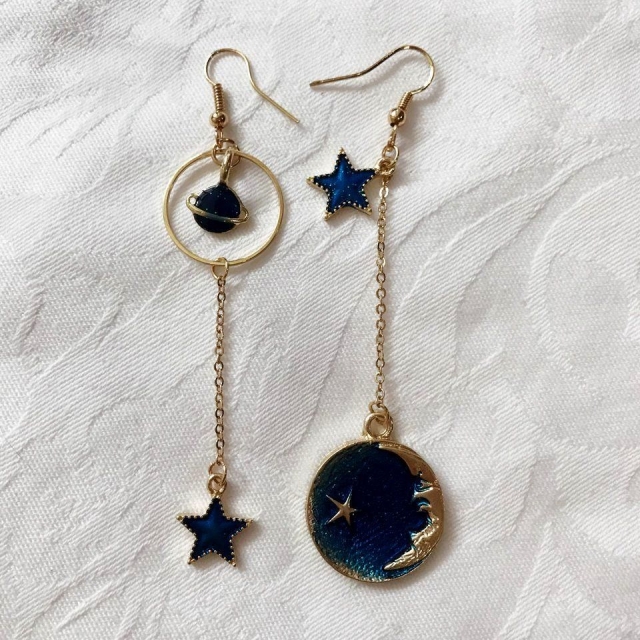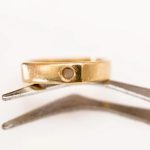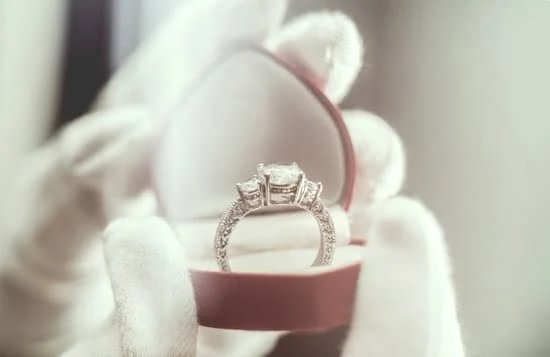Pearl jewelry is known for its timeless charm and elegance and has long been prized as a luxurious decorative item. As with all pieces of jewelry, it is important to maintain them carefully to prevent damage. This article will provide information on how to repair pearl jewelry and the benefits and drawbacks of owning it.
One of the major benefits of owning pearl jewelry is that it can be a great way to complement an outfit or add an extra level of sophistication to your look. Pearls are delicate and unique in their own special way, making them perfect for any occasion.
Their natural beauty makes them an excellent choice for high-end fashion items, whether you’re dressing up for a wedding or having a night out on the town. The luster of pearls can also make you stand out from the crowd and attract admiring glances from passers-by.
Another benefit of having pearls is that they are relatively easy to care for compared to other types of gems. A regular cleaning routine should suffice most of the time, such as wiping down the necklace or earrings after each use with a soft cloth.
Additionally, because they are organic material, pearls won’t lose their color like other stones do over time with exposure to air or light. This means that when taken care of properly, pearls could potentially last forever.
On the other hand, there are some drawbacks associated with owning pearl jewelry as well. One such drawback is that due to their delicate nature, they must be handled very carefully in order to avoid breakage or chipping.
Pearls can become brittle over time if not stored properly in a cool dark place so this must always be taken into consideration when buying Pearl Jewelry repair might also be costly depending on where you take it for repairs – some local jewelers may charge more expensive fees than others for same service so shop around beforehand.
Lastly, not all pearls will have consistent quality standards especially if you purchase them secondhand – some may have chips or discoloration which can ruin their luster and decrease overall value significantly.
In conclusion, despite some drawbacks discussed above, caring for pearls is relatively easy with regular cleaning and proper storage practices at home; likewise getting repairs done should not be too difficult either given that you know how and where to get them done correctly at an affordable price – now we understand better how to repair pearl jewelry.
Pre-Repair Inspection
Before attempting to repair a piece of pearl jewelry, it is important to carefully inspect the item for signs of any potential damage or wear. Doing this will help you identify any problems and better determine how best to proceed during the repair process.
Start by inspecting the metal components of the jewelry and looking for signs of tarnish, corrosion, dents, or broken or missing parts. If there are any problem areas in the metal, it may not be able to hold up when working with the pearls and would need to be fixed first.
Then observe each individual pearl in order to check their luster, color, and size as well as look for any visible chips, cracks, or surface damage. This evaluation can help you assess if those pearls can be repaired without causing further damage.
Once you have completed your pre-repair inspection and identified any current issues with metal components or individual pearls that need repair, it is necessary to determine what materials and tools are needed in order to complete the repairs. Some common tools used include a magnifying loop , tweezers, dental picks and pliers-all of which should only be used by an experienced professional as they can cause damage if not handled properly.
Depending on the extent of repairs needed additional earring wires, jump rings or headpins could also come in handy for creating new settings or connections. To glue newly attached items together superglue or jewelry cement can also be used successfully.
Gather Your Tools
When you repair pearl jewelry, it is vital to have the correct tools and supplies on hand before you start any work. The tools needed in order to repair pearl jewelry depend upon the type of work that needs to be done and can range from a simple pair of pliers to specialized soldering materials.
For a basic repair that includes stringing pearls, a pair of wire cutters, round nosed pliers, needle nose pliers, flat nose or ribbed pliers and beading tweezers will be necessary. If you are working with larger sizes of pearls such as Tahitian pearls, heavier cutting materials such as bolt cutters might also be necessary.
Supplies will not only depend upon the type of work being done but also on the materials used in creating the jewelry piece. If looking to restring a strand of pearls there are various types of stringing cords available including elastic and nylon cords as well as standard cotton bead cord which come in various thicknesses based on the size and weight of the pearls chosen.
Choosing multiple strands known as multi-stranding can require thicker cords or even cables which allow for more weight on a single cord strand so consider heavier options if this is needed when restringing your pearl jewelry.
For more complex repairs additional soldering materials may also be required such as flux, silver solder and solder pickup pens depending on your design needs. Additionally having quality glues and bonding agents handy can help with securing jump rings which add extra secure connections between components within a jewelry setting design.
Pay attention to fastener size too when restringing or adding other components – having an assortment of quality head pins and eye pins available can ensure that all pieces fit properly within their respective holes. Keeping these different types of supplies organized can go a long way in ensuring that you always have what is necessary for completing any pearl jewelry repair project with ease no matter how big or small.
Cleaning Pearls
Pearl jewelry often gets discolored and dull due to contact with perfumes, sweat, and oils. Jewelry containing pearls needs to be cleaned regularly in order to keep it looking its best. Regular cleaning of pearl jewelry using a special cleaning solution helps maintain lustre and prevent damage from dirt and other contaminants.
The type of solution you use for cleaning pearls depends on the type of pearl in the piece of jewelry. For example, most freshwater pearls can be safely cleaned using mild soap and warm water, however saltwater pearls require a more gentle cleaning solution.
Natural (smaller) or imitation pearls may have coatings or finishes that can be damaged by harsh solutions so it is important to use products specifically made for these types of pearls. When cleaning pearl jewelry you should also take extra care not to get any moisture inside settings where gems or diamonds may be present as they could become damaged in doing so.
In terms of frequency, generally your pearl jewelry should only need to be cleaned one to two times per year if it is well-cared for in between cleanings. Additional cleanings may be necessary if the jewelry has been exposed to heavy perspiration, fragrances and harsh chemicals.
Additionally, it’s always a good idea to inspect the pearl strands before putting them on each time as some damage (such as chips or cracks in the actual pearl shaft) can occur without noticed over time. If you do spot any damage during inspection then you’ll want to take it and have it repaired by an experienced jeweler.
Fixing Broken Clasps and Chains
If you have ever experienced the frustration of having a broken or damaged pearl necklace or bracelet, you are certainly not alone. Fortunately, repairing your pearl jewelry does not have to be a tedious task, and it can often be completed if you follow the right steps. Most broken clasps and chains can be easily repaired either at home or by a professional jeweler.
When attempting to repair a broken clasp or chain on your own, one of the best approaches is to purchase repair rings with hinges as they allow for easy attachment of two separate ends. A hinge makes it possible to open and close the clasp more Easily than alternative methods, allowing for higher chances of success in repair attempts.
Also, if you are looking for an even simpler alternative than using the hinge approach you can use a jump ring instead. Instead of having to locate two separate ends of the chain and connect them with a labor-intensive mechanism such as that found within the hinge approach, all you need is to use two jump rings attached together through their connected ends.
Finally, if neither of these DIY solutions seem appropriate for you then there’s no reason why you couldn’t send it off to a professional who Shall have access To high quality tools and materials tailor made for fixing jewel pieces And place Even challenging repairs due To their experience with such projects. When considering hiring a jeweller ensure You reach out To trusted professionals Who commit To your satisfaction when evaluating Their service quality.
Furthermore, Make sure You inquire about any warranties They offer In case something goes wrong after fixings off-site As well As cost estimates For The project Itself Letting You make an informed decision Before paying for services Ordered Needed To get Your jewelry back in working order condition As soon as possible.
Setting and Replacing Stones
Pearl jewelry can be challenging to repair, because the hard surface of a pearl is porous, it may take time and patience to achieve the desired results. For instance, consider the repairing of a pearl necklace with several missing or broken pearls. A variety of options are available depending on the look that one desires and the amount of time they can allocate toward improvement.
The most straightforward approach is to head to a professional jeweler who can restore pearls in-house with precise machinery-a bead reamer preset for the size of pearl in your piece or a drill press used to place a new stem post should you have any set pieces. This method provides an excellent opportunity if you want to duplicate what is already there and maintain the integrity of the design.
However, this option has limitations; professional jewelers are often hesitant to add stones that were not previously part of the original piece, such as replacing large pearls with smaller ones or different colors.
A second option for restoring pearl jewelry is do-it-yourself (DIY) methods; these are best suited for those with an interest in learning more about jewelry making and mending as a hobby. Do-it yourselfers would need access to tools like pinchers, tweezers, needle files, wire cutters and various beads suitable for restringing pearls or making chandelier earrings from parts taken from other pieces.
One could even practice drilling holes in their own oyster shell. With creative skill, DIY enthusiasts may find great satisfaction in creating something truly unique from their repairs – – individualized designs that nobody else has.
When repairing broken pieces of pearl jewelry, it’s important for every person to decide which repair route works best for them given their skillset and project goals: whether DIYing it or calling upon professionals, either way both paths strive towards creating beautiful heirlooms that can stand up against anything life throws your way.
Restringing Pearls
Pearl jewelry is a beautiful addition to any wardrobe, and with proper care, it can remain beautiful for years to come. Unfortunately, accidents and trips to the repair shop are inevitable. If you need help restringing pearls, it’s important to take your time and be mindful of common mistakes that could ruin your jewelry or render it unsafe to wear.
One mistake people often make when repairing pearl jewelry is using too thick of thread. If the material is too thick, it won’t be able to pass through all the holes in the pearls.
This causes strain on the thread while trying to tie off their knot or clasp at the end, which makes them more prone to breaking quickly due to over-tightening. Try opting for thinner threads so that they will more easily pass through each bead and keep the tension uniform throughout if desired.
Another potential issue that affects many people when repairing pearl jewelry is not adequately tying off their knots after stringing each pearl on. It’s natural instinct for many people just to move onto stringing the next pearl without ensuring a strong knot first – but this can cause issues over time as those knots loosen up from handling or washing the pearl necklace/bracelet etc; leading it potentially coming apart altogether.
Be sure you double-knot between each bead as well as triple-knotted at both ends once complete in order to make sure they stay connected with every wearing.
The last mistake one might make while repairing their pearls is forgetting about proper storage once completed. It’s important that after fraying occurs or even beading needs to be done at some point; store away safely in an airtight container with some sort of moisture protection (i.e., silica gel packets). This helps prevent rusting or wearing out due to environmental factors such as dampness within one’s home – or in extreme cases like humid weather outdoors.
Finishing Touches
Bringing a pearl jewelry item to life often requires not only repair but also an eye for aesthetic flair. To ensure the beauty of the jewelry piece, certain refinements must be applied to its design or repair. After repairing the jewelry, polishing can be done as a finishing touch.
Polishing removes scratches and other minor blemishes and restores luster, giving it a sleek new look. Additionally, patina can be added to enhance the luster naturally found in pearl pieces. The technique involves brushing the pearls with natural muslin cloth, resulting in a soft glow that produces subtle color changes in the finish.
When appropriate etching can provide added character to a pearl-based item’s design. This is most helpful when attempting to accentuate raised parts of jewelry as they are more clearly visible after this process is complete.
Gemstones which cover part of the pearl piece can also add further decorative flair allowing artisans to build beautiful combinations into the finished product. A single gemstone or colorful combinations of stones can help brighten up almost any pearl piece with their vibrant color options.
Lastly adding special engravings such as initials or dates give personal meaning and value beyond any decorative aesthetic gain. An engraving featuring words of emotion or layers of intricate patterns have been popular options amongst customers looking for truly special items as gifts for their loved ones or themselves – tending towards timeless craftsmanship customized for you what more could you expect from luxury jewelers?
In summary repairing pearl jewellery incorporates restoring functionality as well as aesthetic charm requiring professional craftsman familiar with advanced techniques such as stone setting and etching – culminating in items that will remain beautiful for many years through careful attention and maintenance considered standard within the field.
Monetizing
Repairing pearl jewelry has become a lucrative business, with many individuals taking advantage of the demand for reliable and quality repairs to make profits. Whether you’re an experienced jeweler or a first-timer who wants to learn the ropes, there are some simple steps you can take to help ensure the process goes smoothly.
The most important part of monetizing on repairing pearl jewelry is having the right tools and materials. This includes specialized tools such as bead reamers and pliers that are specifically designed for working with pearls, along with magnifying glasses and tweezers. Before beginning any repair job, it’s important to check that all your tools are properly sanitized and in good condition – getting started with the wrong items could result in permanent damage to the jewelry.
In order to get your business up and running, you will need to advertise your services but don’t forget to always keep quality at the forefront of what you do – customer satisfaction is key when it comes to repairing delicate pieces of jewelry such as pearls. You can advertise through flyers or online platforms such as Craigslist or Facebook groups; identifying target markets can help ensure potential customers find their way directly to your repair service.
As an extra bonus, if your store happens to be near an area with abundant tourist traffic then this provides an added incentive for people looking for a quality repair job done quickly and efficiently.
When pricing repairs for pearl jewelry, it’s important to be aware that pearls tend to cost more than other gemstones due to their rarity and unique qualities; however, there are still ways of offering competitive prices while making a profit. Take into account the cost of materials used as well as time necessary in order to complete each job – typically three times a third-party estimate – this way you can assess fair prices without undercutting yourself too much.
It is also beneficial to provide discounts or loyalty rewards schemes which may encourage reoccurring customers and help build brand recognition over time.
Conclusion
The security and quality of your pearl jewelry is an important part of any repair process. You need to make sure all tools and supplies used are properly sanitized, if you are doing the repair work yourself or a jeweler has worked on your pearls.
This will ensure that there are no surprises when you put the piece back on your neck or earlobe. You need to make sure to check for loose gem settings and inspect the surface of the pearl for any cracks or abrasion that may have occurred from improper handling during the repair.
It is also important to remember that with any kind of jewelry repair, you should always use a professional jeweler who can guarantee their work for any issues you may uncover after inspecting your repaired pearl jewelry piece. They can apply special protective coatings that help prevent future damage to enhance its luster and prolong its lifespan.
After the completion of a successful repair job, it is also important to store the item in a secure area that is free from direct sunlight and humidity, as they can affect pearls’ health over time.
When storing your repaired pearl jewelry pieces, make sure they are kept away from hard surfaces such as counters and tables. This helps maintain their delicate shape and also prevents them from getting scratched accidentally by keys or other household objects should they be out of sight in a desk drawer or closet shelf. Additionally, it is advisable to keep pearl necklaces in individual pouches so they don’t get tangled together while not being worn.
Regular cleanings are also recommended in order to protect the natural radiance of the pearls themselves which beautiful sheen depends on careful cleaning and maintenance. Taking these precautionary steps will help ensure maximum safety when wearing your repaired pearl jewelry piece and will also keep it looking just as gorgeous as ever.

Welcome to my jewelry blog! My name is Sarah and I am the owner of this blog.
I love making jewelry and sharing my creations with others.
So whether you’re someone who loves wearing jewelry yourself or simply enjoys learning about it, be sure to check out my blog for insightful posts on everything related to this exciting topic!





